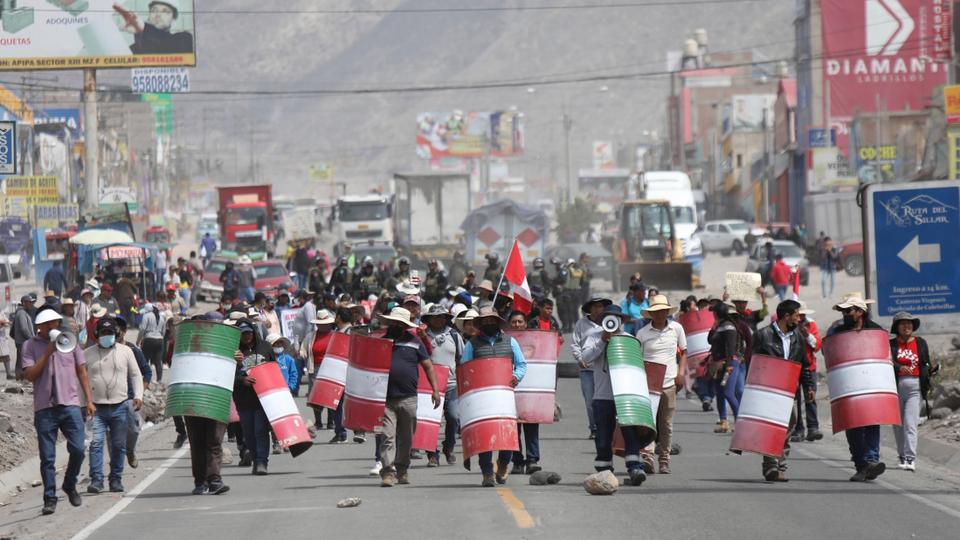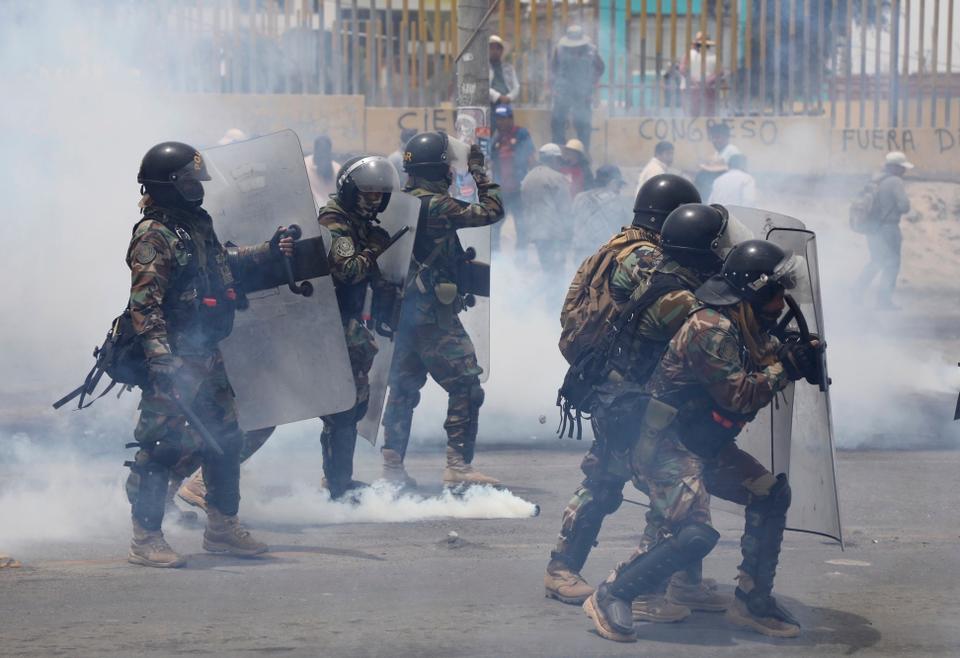Protesters barricade main routes in southern regions of Puno, Cusco, Apurimac and Arequipa, as well as Junin in the centre, demanding resignation of President Dina Boluarte, who took over from her ousted predecessor Pedro Castillo.

After a fortnight-long break, Peruvians have taken to the streets again, blocking roads countrywide to demand the resignation of President Dina Boluarte, who took over from her ousted predecessor in December.
Protesters on Wednesday used stones and burning tires to barricade main routes in the southern regions of Puno, Cusco, Apurimac and Arequipa, as well as Junin in the centre, chanting for Boluarte to leave.
The demonstrations died down over the holiday period, but by Wednesday, the protesters had remobilised.
"There are 10 blockades, mainly around Puno," government spokesperson
Alberto Otarola told reporters in Lima, where a crisis centre was erected.
In Arequipa, police sought to break up hundreds of protesters using tear gas.
Dozens also gathered in the capital, Lima.
"The airports are functioning normally," said Otarola.
Nationwide state of emergency
Boluarte took over on December 7 as the South American country's first woman president following the impeachment and arrest of Pedro Castillo after he tried to dissolve Congress and rule by decree.
Castillo, a leftist former rural school teacher and union leader, faced vehement opposition from Congress during his 18 months in office, and had been the subject of numerous criminal investigations into allegations of widespread graft.
His ouster sparked nationwide protests, with Peru's rights ombudsman reporting 22 people killed in clashes and more than 600 injured.
Boluarte's government declared a 30-day nationwide state of emergency, while she attempted to calm the uproar by seeking to bring forward elections.

'This will continue'
As a precaution, train services between the town of Cusco and the Inca citadel of Machu Picchu were suspended indefinitely on Tuesday, and some 2,000 tourists were escorted from the heritage site.
In the first wave of protests, thousands of tourists found themselves stranded at Machu Picchu and Cusco for days due to road, railway and airport blockades.
TV footage showed police and the army guarding the headquarters of public institutions in some areas where protests have been announced, including Ayacucho, a region with the highest number of victims in the recent demonstrations.From Lima, Boluarte called for an end to the protests she blamed for "delays, pain, economic losses" and appealed instead for "peace, calm, unity to promote development of the homeland."
Protest leader Milan Knezvich, in the mountainous Apurimac region, vowed the struggle will continue.
"No one will want to talk to her. As long as Mrs Dina Boluarte does not resign, this will continue," he told Exitosa radio.
The new government has agreed to bring forward elections set for 2026 to April next year, but many want voting to happen even sooner.On Tuesday, marches were held in various parts of Peru against the planned restart of the anti-Boluarte protests.
Source: TRTWorld and agencies
Social media is bold.
Social media is young.
Social media raises questions.
Social media is not satisfied with an answer.
Social media looks at the big picture.
Social media is interested in every detail.
social media is curious.
Social media is free.
Social media is irreplaceable.
But never irrelevant.
Social media is you.
(With input from news agency language)
If you like this story, share it with a friend!














0 Comments